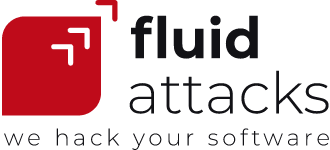| 7 min read
When we strive to create products in our daily work, whatever our area, it's time after time quite beneficial that before delivering them, prior to their presentation to the end users, they're reviewed by someone else. Receiving feedback from colleagues or leaders will not cease to help improve our performance and the quality of our products. This certainly applies to software development. Reviewing the code that developers build to shape, for instance, web or mobile applications, is a fundamental process to guarantee its high quality and security. In this post, we compare automated and manual code reviews and give special attention to the manual method.
What is code review?
Code review is a process through which a source code is systematically assessed to verify its compliance with specific standards. Such compliance allows the software product to remain with a reduced amount of bugs or flaws (it'll be free of them once in a blue moon) that are many times the result of a slapdash approach by developers. Code review can focus on the software's architecture, functionality and style, but it can also deal with its security. Hence the term secure code review. (Take as implicit the fact that, when here we talk merely about "code review," we refer to the analysis that involves security because a review without considering it ends up being insufficient).
Code review is based on coding standards and requirements that, in fact, are what developers should bear in mind from the outset. Errors arising from non-compliance, no matter how small, can take a heavy toll on the organization owning the code and related individuals and entities, especially when criminals exploit them. Today, mainly within the DevSecOps approach, it's recommended that code review be carried out early in the software development cycle (SDLC) before deploying the software into production. The idea is to make this a constant operation so that issues are reported to developers asap and to avoid high costs in the future.
Manual code review vs. automated
Both savvy humans and automated tools can perform code reviews. Currently, there's a whole raft of tools for code review. And although these may vary in their features, such as ease of use, appearance and capabilities, here we make a comparison in general terms. Automated code review is less expensive and can cover much more code in less time than manual review. Indeed, when a reviewer is tasked with reading and reviewing code manually, line by line, they are usually assigned only a particular piece or segment of code. In the case of large products, it would take a lot of time and effort to review all the code manually. So, this form of review generally has less scope than that performed by intelligent machines, but, as we'll see, it's an indispensable procedure given the limitations of the tools.
Automated tools have a database of predefined standards and requirements for compliance review and error detection. Organizations that purchase the tools can configure them to follow specific rules and ignore others and to work according to one or more specific programming languages. The point is that whatever is outside the predefined capabilities of the tool escapes its detection radar. Additionally, not everything a tool reports truly represents an issue or flaw in the code. We refer to these last two hurdles as false negatives (omissions) and false positives (lies), respectively. Preventing these from being present when making code review reports is then in the hands of the experts and their manual work.
One of the biggest shortcomings of code review tools is their inability to detect so-called business logic flaws. Automated tools do not understand the human intentions and business logic behind a particular system. Business logic refers to the part of the software that codifies business rules that determine processes such as data creation, modification and storage. Business logic describes multiple series of activities or steps in which relationships are established between the end user interface and the database. More often than not, business logic flaws are peculiar to the application in question and its functionality. They are miscellaneous and do not follow defined or similar risk patterns for all cases. Moreover, they are not located in a specific line of code but involve several areas of the overall architecture.
The business rules dictate the software's responses or reactions (e.g., prevention actions) to the different possible scenarios. Vulnerabilities in business logic often mean the inability of the software to detect and correctly handle some scenarios, certain strange or unexpected user behaviors that the developers didn't take into account or anticipate. That's where attackers capitalize on their cunning. For example, let's say the logic in a money transfer application is not restricting user input according to what might have been determined in the business rules. Instead, it allows the entry of negative values, which may lead to an unforeseen procedure such as, let's imagine something, extracting money from, rather than depositing it to, the supposed recipient of the transfer. These types of vulnerabilities are often rated with very high severity because of the potential impacts of their exploitation. It is a task of the manual code review to detect and report these enormously dangerous security issues.
Nevertheless, on balance, rather than considering substituting or replacing one method with the other, we should speak of complementation. Ideally, we should use both methods, not just one. The automated code review, with its scope and speed, allows the time and effort invested in manual code review to be reduced. It enables the expert to concentrate on pieces of code that may have more complex and severe vulnerabilities than those the machine can identify. Unfortunately, there are many who, in their ignorance, continue to believe that one or more automated tools running in their organizations is good enough. They have not heeded comments like those made in communities such as OWASP: "manual code review should be a component of a company's secure lifecycle, as in many cases it is as good, or better, than other methods of detecting security issues."
Zeroed in on manual code review
Who can perform manual code review?
The manual code review can be carried out by colleagues of the developers, senior engineers or other professionals, including external providers such as Fluid Attacks with its Secure Code Review. The people in charge of a thorough code review should have extensive knowledge of software development, programming languages, secure coding practices, security standards, requirements and vulnerabilities, among other things. They should be able to think and act like threat actors and have the virtue of patience and vast review experience. However, some reviewers may be just beginning to gain experience and should not be excluded but may simply be assisted by other, more seasoned individuals. This decision, in any case, may vary according to the needs and characteristics of the code of the organization requesting the service. Keep in mind, as it's commented in the OWASP Code Review Guide, for instance, that "a new single sign-on authentication module in a multi-billion dollar company will not be secure code reviewed by a person who once read an article on secure coding."
How to do manual code review?
It's always recommended that a single person doesn't do a manual code review. What initially escaped the developer's eyes, in some cases, may also elude the reviewer's eyes. Although with the inclusion of a second individual, the same thing can also happen, the probabilities would certainly be reduced. Additionally, work performed by several individuals promotes the creation of a collaborative environment between the members of the development and review teams. Cooperation can occur when the reviewer is not seen as a patrolman but as an advisor that positively affects the efficiency of the developers with relevant feedback. Reviewers should ask developers to send small code changes to them for a better workflow. And they can do reviews in environments isolated from those in which the developers may be working so they don't act as obstacles.
To conduct comprehensive and effective reviews, experts must be in context, knowing what they are assessing. They must learn about and broadly understand the software's functions, purposes and features to be evaluated, including the programming languages and libraries and other components used and their interactions. From there, reviewers should ask questions such as what might happen if some operation of the code fails. They must know what types of users are allowed and which are their privileges. They must understand what kinds of data are being processed and in what way and ask what would happen if they were compromised. In addition, they must model potential threats, in part recognizing threat agents and their possible purposes, and, depending on the type of software, anticipate what security vulnerabilities they may find.
The amount of information to be gathered in a code review will depend on the organization's size, the reviewers' skills and the potential risks of the code. A good way to start this collection may be to establish contact and conversation with the application developers to receive at least some basic information. Automated tools also come into play to provide general data before the manual review is implemented on specific areas of the code (prioritized, for example, by risk) to assess style, interpretation and security. Tools such as linters can even be used in advance by developers to get support in identifying simple formatting errors such as typos.
In the code review, keeping as support and guide the standards set or requested by the organization, including, of course, the business rules, the reviewers will first learn about the architecture and style of the code and hence its errors. Concerning the standards, the reviewers can handle checklists of security requirements adapted to the software design that cannot be overlooked, such as the following: input validation, authentication and password management, access control and session management, cryptography and data protection, error handling and logging, system configuration and control, among others. The reviewers will mark out the attack surface and possible attack vectors, the security controls implemented so far (how well are assets and operations being protected?), the vulnerabilities present, the estimated risks and possible impacts, etc. The categorization and qualification of vulnerabilities are pretty useful as they allow their prioritization for the subsequent remediation by the team of developers.
For each error or security issue detected in the code, the reviewers must recommend a modification to comply with the previously defined requirements. If necessary, they establish contact again with the development team to initiate discussions (e.g., about the feasibility of the suggested changes) or to resolve doubts and difficulties. Subsequently, if required, the reviewers propose alternative recommendations or solutions and define exceptions to reach an agreement. After incorporations or modifications by developers, a new review may take place to verify that they took suggestions on board and that their product is now of better quality and security.
Code review with Fluid Attacks
At Fluid Attacks, we offer you our Secure Code Review (for more details, read this post), with automated and manual code review, within an integral service called Continuous Hacking. This service is not limited to static application security testing and software composition analysis. Beyond the intervention of our automated tools (we invite you to use them for 21 days for free), which also perform dynamic application security testing, we employ methods such as manual penetration testing and reverse engineering with our highly certified ethical hackers. For more information on how we can help you prevent your organization from falling victim to cyberattacks, do not hesitate to contact us.
Recommended blog posts
You might be interested in the following related posts.











